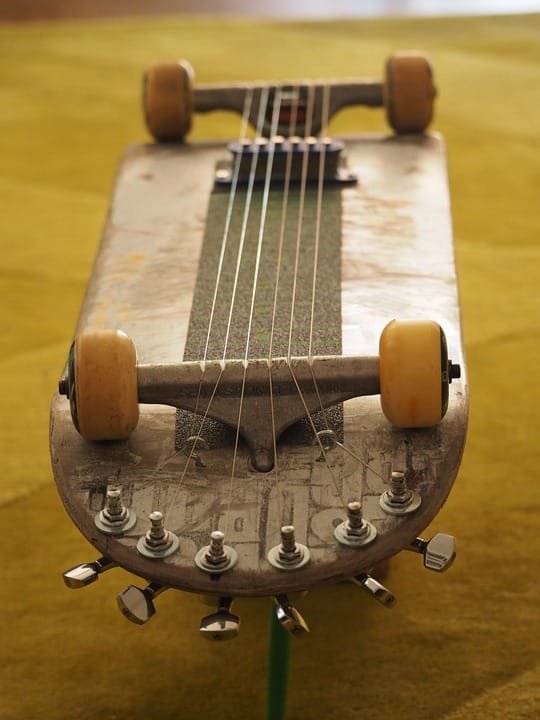As consumers become increasingly aware of the environmental and social impact of their purchasing decisions, the fashion industry is undergoing a significant shift towards sustainability and ethics. Gone are the days of fast fashion’s take, make, dispose mentality; instead, fashion brands are embracing innovative and responsible practices that prioritize people and the planet.
The Silent Revolution
As I walked through the bustling streets of my hometown, I couldn’t help but notice the staggering amount of discarded clothing scattered about. T-shirts, jeans, and dresses littered the sidewalks, symbolizing the devastating impact of fast fashion on our planet. I, too, was once guilty of contributing to this problem, but my journey into sustainable fashion has changed the way I think about clothing entirely. In this article, I’ll share my story and provide actionable tips on how you can join the sustainable fashion movement.
The Dark Side of Fast Fashion
Fast fashion has become a global phenomenon, with many of us indulging in trendy garments at an alarming rate. The outpour of cheaply made, heavily processed clothing has created a culture of disposability. Each year, over 12.8 million tonnes of textile waste is generated globally, with only a small fraction being recycled or donated (1). The fashion industry is the second-largest polluter in the world, posing a significant threat to our environment.
The Rise of Sustainable Fashion
But, there’s hope on the horizon. The good news is that sustainable fashion is becoming increasingly mainstream, with eco-friendly materials, slow fashion, and upcycling gaining popularity. Ethical fashion brands are leading the charge, prioritizing people and the planet in their production processes. By making conscious choices, we can significantly reduce the environmental and social footprint of our clothing consumption.
The Power of Eco-Friendly Materials
Sustainable fashion begins with choice, and it’s fascinating to explore the innovative materials being used. Hemp, for instance, is a highly durable, biodegradable, and water-resistant textile (2). Bamboo is another great option, as it requires minimal pesticides and irrigation (3). Labels like Patagonia and Reformation are already incorporating these eco-friendly materials into their collections. When shopping, opt for GOTS (Global Organic Textile Standard) certified products to ensure they meet rigorous environmental and social standards.
The Joy of Slow Fashion
Slow fashion is all about embracing the process, savoring each item, and respecting the hard work of those who create it. This approach encourages us to invest in quality pieces that will stand the test of time, reducing the need for constant new purchases. Think of your wardrobe as a carefully curated collection of loved items, not a revolving door of disposables. Consider the concept of “repair, repurpose, replace” instead of the traditional “buy, wear, discard” cycle.
Upcycling: The Art of Transforming Waste into Treasures
Upcycling is the practice of transforming discarded materials into something new and valuable. It’s an empowering way to breathe new life into old garments, repurposing them into unique, sustainable items. From turning old t-shirts into reusable bags to converting worn-out jeans into trendy accessories, the possibilities are endless. Online platforms like ThredUp and Poshmark make it easy to find or sell second-hand items, reducing waste and promoting a culture of reuse.
Shining Light on Sustainable Brands
Patagonia, Reformation, and Stella McCartney are just a few of the many innovative brands leading the charge. These companies prioritize sustainability, transparency, and fair labor practices. Look for certifications like the Global Social Compliance Programme (GSCP) or the Fair Labor Association (FLA) when shopping to ensure constructive labor practices. Online resources like the Good on You app and the Better Fashion Coalition provide valuable guides to help you find the most sustainable options.
Sustainable Swaps for a Better Wardrobe
So, how can you make the switch to sustainable fashion? Here are some simple swaps to get you started:
- Second-hand shopping: Hit local thrift stores, online marketplaces, or swap with friends to reduce waste.
- Reset your wardrobe: Consider a capsule wardrobe, focusing on timeless, versatile pieces.
- Choose sustainable fabrics: Opt for eco-friendly materials, like organic cotton or Tencel.
- Repair, repurpose, replace: Mend tears, repurpose old items, and invest in durable pieces.
A Call to Action: Join the Sustainable Fashion Revolution
Sustainable fashion is no longer just a niche; it’s a movement. By making small changes to our wardrobe and consumption habits, we can significantly reduce our environmental and social impact. I invite you to join me on this journey, sharing your own sustainable fashion stories and tips below. Together, let’s celebrate the power of conscious living and self-expression through fashion.
Frequently Asked Questions
- What does slow fashion mean? Slow fashion is an approach to fashion that emphasizes quality over quantity, encouraging consumers to invest in timeless, well-made pieces rather than fast, cheap, and disposable clothing.
- How can I get started with sustainable fashion? Begin by decluttering your wardrobe, replacing fast fashion with quality pieces, and exploring second-hand shopping.
- What’s the difference between sustainable and eco-friendly? Sustainable fashion prioritizes both environmental and social responsibility, while eco-friendly focuses primarily on environmental concerns.
- Can I still be stylish with sustainable fashion? Absolutely! Sustainable fashion is not just about being frugal; it’s about making conscious, responsible choices that benefit you, the planet, and society.
References:
(1) Ellen MacArthur Foundation: A New Textiles Economy: Redesigning Fashion’s Future
(2) Patagonia: Tencel Fabric
(3) Ecofashion Talk: The Sustainable Fashion Movement
Visual Content:
- An illustration of the sustainable fashion industry’s growth
- A split-screen image showcasing fast fashion vs. slow fashion
- Infographics highlighting the environmental and social impact of the fashion industry
- A collage of eco-friendly fabrics, with descriptive alt text
- A video demonstration of upcycling old clothing into new items
- A photo series of sustainable fashion brands and their eco-friendly designs.








Leave a Reply